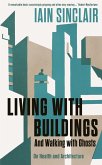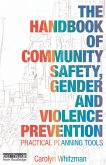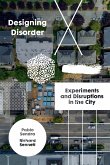Includes 36 chapters that deploy interdisciplinary approaches to the analysis of the mutual relationship between pandemics and the built environment. The chapters share the story of a pandemic in a particular city or region from five continents, and are organized in four sections to convey the mechanisms of change that affect vulnerabilities and responses to epidemic illnesses: 'Urban Governance', 'Urban Life', 'Urban Infrastructure' and 'Urban Design and Planning'. Two prominent scholars from the disciplines of public health and medical anthropology provide a prologue and epilogue: Sandro Galea writes on 'Pandemics and urban health', and Richard J. Jackson on 'Urbanism and architecture in the post-COVID era'.
The contributors to this new study are historians, public health experts, art and architectural historians, sociologists, anthropologists, doctors and nurses. In researching their contributions, all have spoken to an audience that includes the public, practitioners and academic readers; the resultant case studies reveal a diverse range of urban interventions that are connected to the impact of epidemics on society and urban life, as well as the conceptualization of and response to disease.
Epidemic illnesses - not only a product of biology, but also social and cultural phenomena - are as old as cities themselves. The recent pandemic has put into perspective the impact of epidemic illness on urban life and exposed the vulnerabilities of the societies it ravages as much as the bodies it infects. How can epidemics help us understand urban environments? How might insights from the outbreak and responses to previous urban epidemics inform our understanding of the current world? With these questions in mind, this book gathers scholarship from a range of disciplines to present case studies from across the globe, each demonstrating how cities in particular are not just the primary place of exposure and quarantine, but also the site and instrument of intervention.
This book seeks to explore the profound and complex ways that architecture and landscape design were impacted by historical epidemics around the world, from North America to Africa and Australia, and to convey this information in a way that meaningfully engages a public readership. The chapters analyse the development of urban infrastructure, institutions and spaces in western and eastern societies in response to historical pandemics. They also demonstrate how epidemic illnesses, and their responses, exploit and amplify social inequality in the urban contexts and communities they impact.
The contributors to this new study are historians, public health experts, art and architectural historians, sociologists, anthropologists, doctors and nurses. In researching their contributions, all have spoken to an audience that includes the public, practitioners and academic readers; the resultant case studies reveal a diverse range of urban interventions that are connected to the impact of epidemics on society and urban life, as well as the conceptualization of and response to disease.
Epidemic illnesses - not only a product of biology, but also social and cultural phenomena - are as old as cities themselves. The recent pandemic has put into perspective the impact of epidemic illness on urban life and exposed the vulnerabilities of the societies it ravages as much as the bodies it infects. How can epidemics help us understand urban environments? How might insights from the outbreak and responses to previous urban epidemics inform our understanding of the current world? With these questions in mind, this book gathers scholarship from a range of disciplines to present case studies from across the globe, each demonstrating how cities in particular are not just the primary place of exposure and quarantine, but also the site and instrument of intervention.
This book seeks to explore the profound and complex ways that architecture and landscape design were impacted by historical epidemics around the world, from North America to Africa and Australia, and to convey this information in a way that meaningfully engages a public readership. The chapters analyse the development of urban infrastructure, institutions and spaces in western and eastern societies in response to historical pandemics. They also demonstrate how epidemic illnesses, and their responses, exploit and amplify social inequality in the urban contexts and communities they impact.
Dieser Download kann aus rechtlichen Gründen nur mit Rechnungsadresse in A, D ausgeliefert werden.









